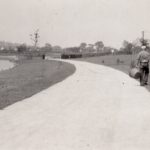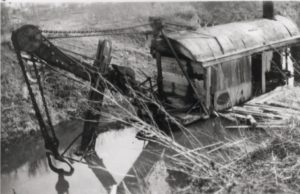
To the Editor:
As a neighbor, fan, and defender of poor Clay Pit Pond, I especially enjoyed the recent article (“Clay Pit Pond Progresses from Eyesore to Asset,” Belmont Citizens Forum Newsletter, November/December 2019). I would like to add a few more details on the recent history of the pond.
When we moved to Belmont in the fall of 1974 there was a shopping cart in the pond by the inlet and advertisements about the upcoming Kiwanis Fishing Derby. I found the cart and derby in great contrast. Apparently the pond was regularly stocked for the event. No one noticed the cart? Newcomer though I was, I called Town Hall to suggest it be removed before the derby. My concern for the pond hasn’t waned.
Some years later, after observing many people of different nationalities taking fish (herring, carp, and American eels) from the pond for consumption, as a Conservation Commission member at the time, I wrote a grant for testing the fish. It turned out that among other contaminants, the eels contained chlordane, a common pesticide until it was banned in 1988. The Board of Health posted warning signs that are battered and worn, if still there. I don’t recommend eating the fish even now.
We used to participate in the old GreenUp CleanUp Days of long ago. Interesting things were pulled from the pond: a concrete bench, lunch trays, plates, books, bagged dog waste that had been stuffed down storm drains. No steamshovel though!

An 1884 Marion power shovel, said to have been taken in 1926 after Clay
Pit closed. This photo won a prize from the Marion Company for being a picture of its oldest shovel. Image courtesy of Michael Chesson/Belmont Public Library.
Another time the commission was involved in restoring the bank after a massive oil spill from the Burbank School, placing coir rolls along the bank, and planting wetland plants to stabilize the bank after the oil-contaminated soil had been removed. My daughter’s waders came in handy for that project. Those were “hands-on” days.
In 1995 the commission wrote an extensive report on the health of the pond. We found a layer of saline in the water column even before the current level of road salt use. The pond receives runoff from almost the entire town. Sand washing off the streets caused siltation, and the western end has become far more shallow. Now geese are commonly seen standing there instead of floating.
Currently there are real concerns about flooding. Years ago a storm event found the water flowing into the high school band room. After major storms, debris is regularly deposited on the walking path on the Concord Avenue side: evidence of the overflow. Naturally the pond is only a link in the chain of water bodies that eventually reach Boston Harbor.
After a major storm, the pond level does not begin to lower until the pumps at the Amelia Earhart Dam start working to lower the water level. It can be assumed that each receiving water body floods until the final release is accomplished.
A new dam at the outlet culvert under Underwood Street has been mentioned, but since the pond’s capacity is already limited, a dam would not relieve the pressure. The pond’s drainage goes through two small old corrugated pipes that run under Hittinger Street at the eastern end of the pond. Not only are they undersized but their corrugated surfaces slow the drainage, and siltation in front of the pipes impedes the function as well. Claypit is already serving as water storage. However, until it begins to drain, some neighboring properties flood since the drains can only function when there is space in the pond. The map of culverts leading to the pond shows several storm drains leading to the same culvert and several culverts leading to a single one. Obviously those extra “drains” don’t drain. It’s as if to get your sink to drain more quickly you added an extra drain to the same drainpipe. Futile!
I support dredging the pond, but the many chemicals in the sediment from decades of street runoff and unapproved drainage probably mean it would be a hazardous waste project, which would be costly. Instead, for a start, the ancient drainage pipes under Hittinger Street must be reconfigured.
All of the local water bodies are vital in dealing with the impacts of climate change. Claypit Pond is key. Do we care about the health of this asset?
Carolyn Bishop
Orchard Street, Belmont


Sorry, the comment form is closed at this time.